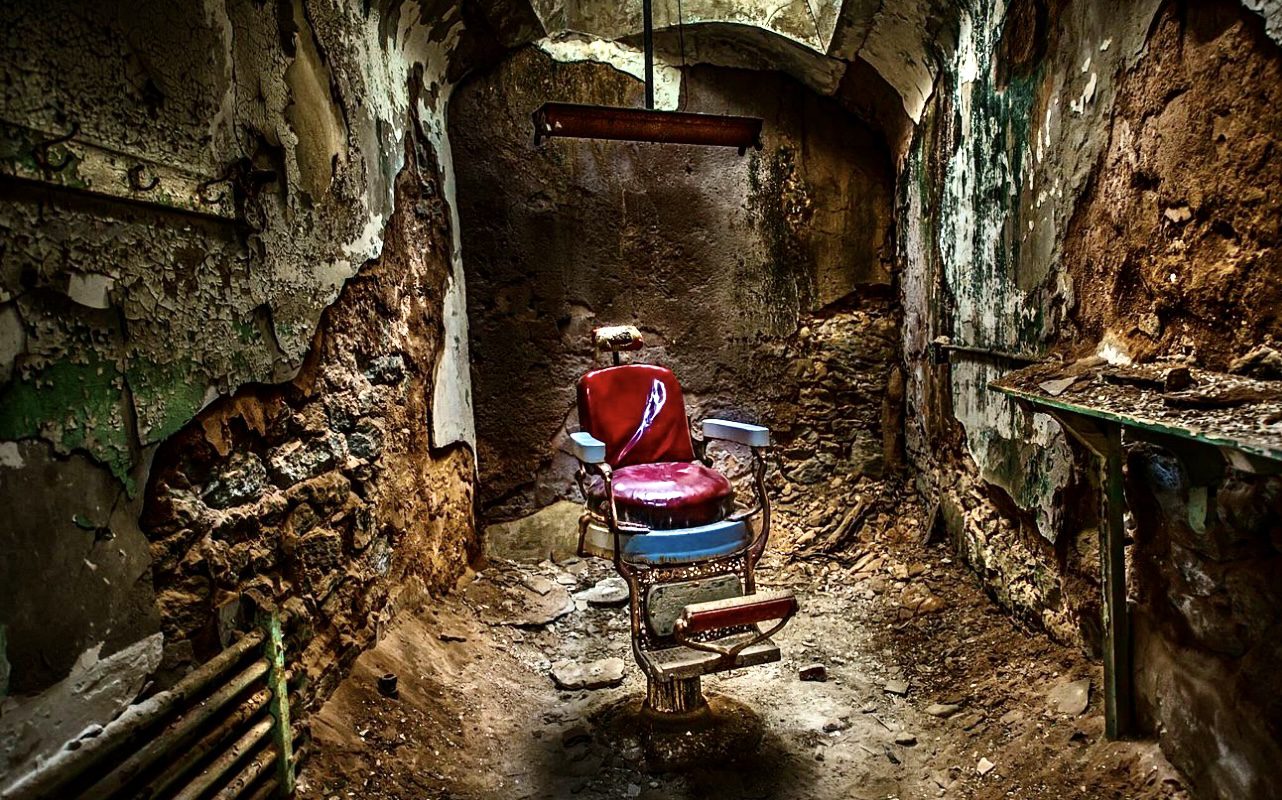Eastern State Penitentiary (Eastern State Penitentiary, ESP) in Philadelphia, Pennsylvania, is one of America's most famous historic sites, preserving nearly two centuries of penal reform history and architectural innovation. Founded in 1829 in the Fermont district of Philadelphia, ESP was designed by architect John Haviland with a revolutionary concept: separate confinement, known as the "Pennsylvania system."
This was an innovative approach that used solitary confinement as a form of rehabilitation rather than punishment, emphasizing contemplation and repentance.
Thanks to its unique wheel-shaped design, ESP quickly gained international fame, becoming a model for over 300 prisons worldwide. The Gothic architecture of the building, with narrow corridors resembling churches, is intended to evoke reverence and promote self-reflection among inmates. Each cell had a single light opening, known as the "God’s Eye," symbolizing the omniscient eye and encouraging spiritual repentance. Notable prisoners, including gangster Al Capone and bank robber Willie Sutton, have added further mystery to this place. Capone’s cell, furnished with carpets and luxurious furniture, remains one of the most popular museum exhibits today.
Besides its architectural significance, ESP also witnessed notable events, including a daring escape in 1945, when twelve inmates, including Sutton, tunnelled 30 meters to freedom. In the mid-20th century, with increasing overcrowding issues, ESP abandoned its solitary confinement model, and the prison was closed in 1971. For many years it stood in ruins, overgrown with weeds and populated by homeless cats, but it opened as a museum in 1994.
Today, Eastern State Penitentiary attracts hundreds of thousands of visitors annually, offering an immersive experience into the history of this eerie place and examining the broader context of the US penal system. The museum is also famous for its seasonal attraction "Halloween Nights," during which visitors are immersed in the ghostly atmosphere of prison walls, wander dark corridors, and learn about horrifying prison life stories. ESP is not only a window into the past of the American penal system but also a vivid reminder of the evolution of approaches to justice and punishment.
Eastern State Penitentiary is not only a keeper of history but has also become a home for captivating art installations that blend the past with contemporary art, reminding us of the passage of time, oblivion, and changing perspectives. Here are some of them:
- Cats’ Ghosts: When the prison closed in 1971, a colony of wild cats inhabited its walls. During restoration work, all cats were trapped, sterilized, and the colony gradually disappeared. In honor of these animals, Linda Brenner created 39 sculptures of cats, which slowly decay over time, symbolizing the inevitable natural decay of all living things.
- The End of the Tunnel: Artist Dayton Kassem installed hundreds of feet of red pipes representing prisoners’ escape routes. This serves as a reminder not only of escapes but also of the struggle for freedom even in the bleakest places.
- "Recollection" Display: In the wings of Eastern State Penitentiary, six dioramas by Susan Hagen depict important moments in the prison’s history, including escape stories and daily life of inmates.
- Seven Decades of Prison Films: Artist Alexa Hoyer placed televisions in different parts of the prison, showing clips from movies about prison life. The exhibition title "Always Wanted to Go to Paris" is a quote from one of the films, adding a bitter humor, illustrating how inmates’ dreams never come true.
- Yuktaposition: Artists Matthew and Jonathan Stemmler divided one of the cells into two, creating a grid of plaster pieces suspended in a plane. The floor is covered with shiny slate, making the surface soft and reminiscent of another level of reality.
- My Glass House: Judith Taylor, inspired by the natural element penetrating the prison walls, took photos of plants and textures and printed them on glass. The glass inserts became part of the prison’s greenhouse, demonstrating the symbiosis of nature and stone walls.
- Living Space: A project by Johanna Inman and Anna Norton featuring a series of video images showing how weather conditions affect the prison's structure, emphasizing the interaction of light, time, and nature that changes but does not destroy the stone walls.
Eastern State Penitentiary has become a place where the past meets contemporary art, and history intertwines with reflections on human memory, time, and the boundaries of human aspirations.
Current information:
Address: 2027 Fairmount Ave, Philadelphia, PA 19130, United States
Contacts: +1 (215)-236-3300
Hours:
Mon-Sun 10:00-17:00 (11:00 AM - 05:00 PM)


